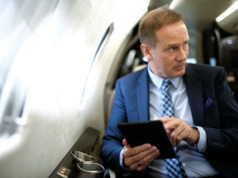
Wi-Fi is so ubiquitous and powerful on the ground that we rarely give it a second thought. Yet some business aircraft operators have been settling for dramatically reduced capabilities for their inflight connectivity (IFC).
You use your aircraft to stay more connected geographically, but how much time is lost by being out of touch in a meaningful way while underway? As a business aircraft operator, your decision likely isn’t whether to equip your aircraft with IFC, but how to select a service or technology that best fits your needs and provides you with the best possible inflight communication link to the rest of the world.
While a connectivity provider(s) used to be selected solely on connectivity coverage, cost, and capacity, that choice now should include affordability, security, and overall performance. Making the decision even more difficult is the relative importance of these attributes, and the ability to try to assess future technology advances to ensure that your investment doesn’t become obsolete.
Your primary connectivity options are satellite and air-to-ground (ATG) systems.
Traditionally, satellite connectivity has been the only option for aircraft flying over the water since ATG systems obviously struggle where there is no ground. For larger aircraft, the best answer may be a hybrid of complementary systems – both satellite and ATG. Using both offers reduced costs and an improved experience with ATG on land routes, while maintaining connectivity when the aircraft is over water.
While the cost difference is easy to understand, assessing “user experience,” versus just the speed of the internet, may be more challenging. “User experience” is a combination of attributes – specifically, latency, throughput to and from the aircraft, and packet loss – that affects the way the internet experience “feels.” Placing too much emphasis on one can have an adverse effect on user experience.
“Latency” is the time it takes for a “data packet,” or unit of information, to go from one point to another. That time is measured in milliseconds, but even a small lag due to latency can have a big impact on performance. ATG systems naturally have a lower latency due to the much greater distance between satellite orbits and the aircraft. That distance can create a difference of up to ten times the latency compared with ATG.
Why does that matter? Nearly anything online you take for granted at home – loading websites and pages, videoconferencing with co-workers or family, or even playing an online game – depends on low latency, a key feature of 5G networks. In the air, those tasks become virtually impossible with high latency. You’ll want a provider whose network offers speed and capacity both to and from an aircraft, not just in one direction – because the internet is really a two-way communication. It’s key to get a network that delivers high throughput (the amount of data successfully moved from one place to another) without suffering any loss of data packets in the process.
All these data – along with sensitive information from your passengers in the cabin – need to be transmitted securely. How secure is your system? Modern IFC does more than just offer internet to the cabin. It gets real-time data to and from the aircraft to ensure smooth and safe operations: for example, weather and routing information to pilots to save fuel, or data that enable ground crewmembers to efficiently plan and execute maintenance.
Ask questions about the security of the signal itself. Will your data be sent on a single, aircraft-focused beam? Or are you sharing the same bandwidth as hundreds of other aircraft, much like at a public coffeehouse?
The era of subpar IFC is over. Look for network providers who’ve moved beyond decades-old technology or equipment with known vulnerabilities, and choose your next network to take advantage of the latest innovations. BAA
Nancy Walker, SmartSky Networks’ Chief Commercial Officer, has more than 30 years of business development, engineering, and program management experience in advanced radio communications systems, both military and commercial, for use in aviation and spaceborne environments.




